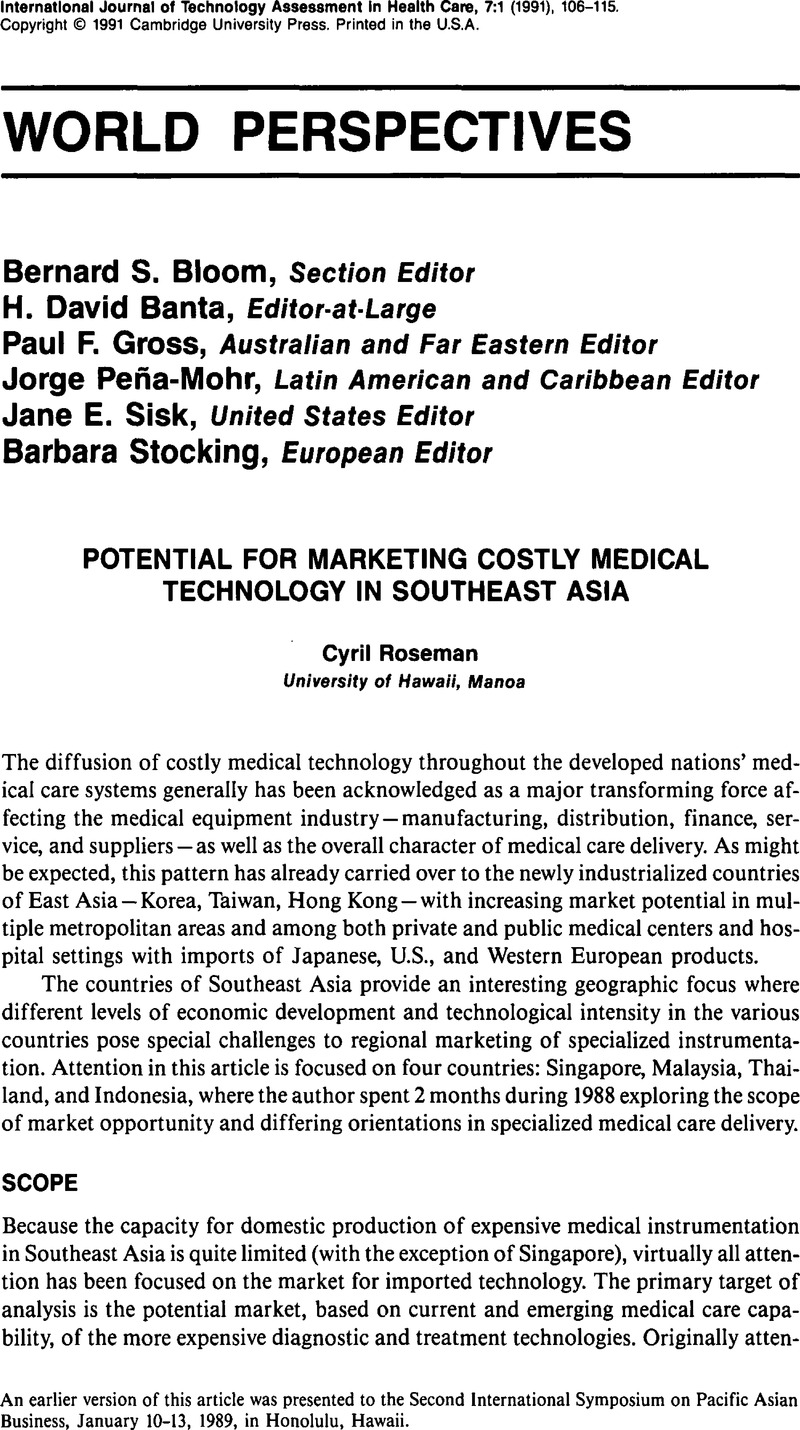No CrossRef data available.
Published online by Cambridge University Press: 10 March 2009

1 These statistics, and all others throughout the article unless otherwise noted, are derived from unpublished U.S. Department of Commerce market data on medical equipment and supplies, especially country market profiles for Southeast Asia.
2 Figley, Melvin M. and Margulis, Alexander R., “The Impact of New Imaging Technology on Health Care, Research, and Teaching: An International Symposium.” American Journal of Radiology, 1987, 149, 1111–26.Google Scholar
3 Singapore domestic production is expected to rise from $33 to $46 million by 1991, an average annual rate of increase of 11%. The bulk of this production comes from Baxter-Travenol, but also includes other manufacturing plants added during the 1980s: Becton-Dickinson, Diagnostic Biotechnology, and Pacific Biomedical. Eighty percent of the domestic Singapore medical equipment and supplies production has been for export, largely Pharmaceuticals, testing equipment, disposables, and patient devices.